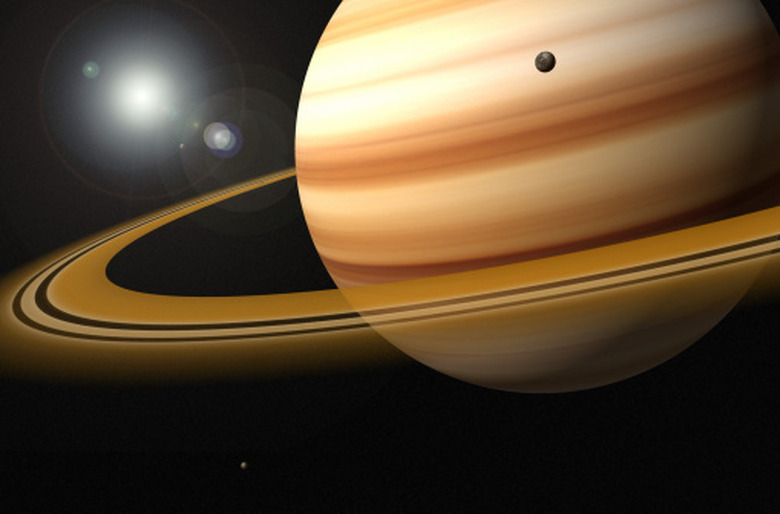Saturn Facts For Children
If you are doing a report on one of the planets in the solar system, consider Saturn. Saturn is easily recognizable due to the large rings surrounding it. Although the harsh conditions on the planet prevent any humans from exploring there, scientists know quite a bit about Saturn, as well as its 53 "official" moons.
History
History
Saturn was named after the Roman god of harvest and agriculture. This same god was called Cronus by the Greeks. No one is certain when Saturn was first discovered, since it has been visible in the sky for many thousands of years. The famous astronomer Galileo Galilei saw the rings of Saturn through his telescope in 1610. He was confused when, in 1612, the rings seemed to disappear. The position of the planets at that time prevented the rings from being seen.
Basics
Basics
Saturn is the second largest planet in the solar system after Jupiter. To get an idea of just how big Saturn is, you could place more than nine Earths in a straight line, and they would fit inside of Saturn. The planet itself cannot be walked upon, not only because of the harsh conditions, but because it has no literal surface. Saturn is composed of mostly helium and hydrogen, while its rings are made from small rocks, dust and ice particles.
Compared to Earth
Compared to Earth
Saturn is very different from Earth. Because of how slow Saturn goes around the sun, one of its years is equal to more than 29 Earth years. The planet spins very quickly on its axis, however, making its days just 10 hours and 14 minutes long. Because the planet is made of mostly gas, if it were placed in water it would be able to float. Earth, on the other hand, is heavy, and would naturally sink. Saturn is extremely windy. The winds that blow around the equator of the planet can reach up to 1,118 miles per hour. Earth's fastest winds generally never go above 250 mph.
Rings and Moons
Rings and Moons
Saturn is probably easily recognized because of its rings. The rings are more than 169,800 miles wide, but they are so thin that they could fit between a football field's goal posts. There are seven categories of rings, based on their spacing and size. Saturn has these rings because the moons around the planet hold them there. Compared to Earth's one moon, Saturn boasts 53 official moons, and nine moons that are provisional, or unofficial. Titan, the second largest moon in the solar system, is likely one of the most well-known. This moon is even bigger than the planet Mercury.
Cite This Article
MLA
King, Melissa. "Saturn Facts For Children" sciencing.com, https://www.sciencing.com/saturn-children-7954103/. 24 April 2017.
APA
King, Melissa. (2017, April 24). Saturn Facts For Children. sciencing.com. Retrieved from https://www.sciencing.com/saturn-children-7954103/
Chicago
King, Melissa. Saturn Facts For Children last modified March 24, 2022. https://www.sciencing.com/saturn-children-7954103/
